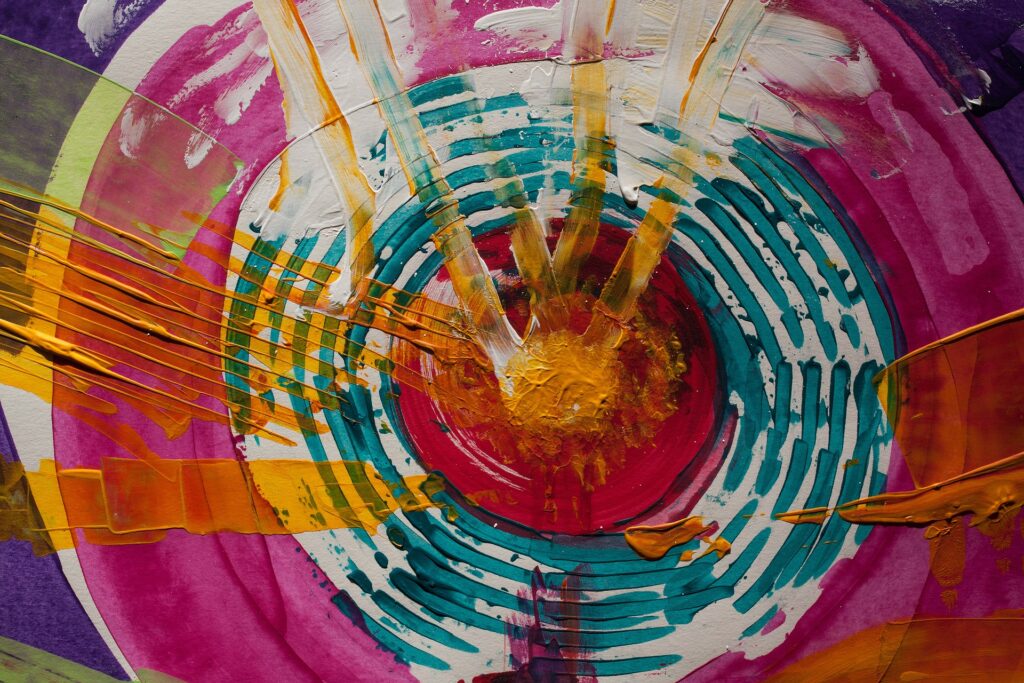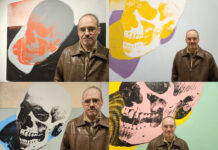A new article, published in The Arts in Psychotherapy, describes the ways art therapy and mindfulness have benefitted refugees and asylum seekers in Hong Kong. The article describes how the program, Inhabited Studio, which provides workshops on art making and mindfulness meditation, has supported individuals in moving forward after traumatic experiences.
“The combination of art therapy and mindfulness helped participants cope day to day and allowed participants to begin to get a sense of not only who they were and what they had lived through, but potentially who they could become,” write the authors, led by Debra Kalmanowitz from the Department of Social Work and Social Administration at the University of Hong Kong.

The increasing number of Syrian refugees has raised the issue of how to support the mental health of individuals who have fled their countries and experienced political violence. An estimated 11 million refugees have left Syria since 2011 and there are over 21 million refugees worldwide. Although the majority of refugees do not develop Posttraumatic Stress Disorder, mental health professionals working with refugees often use a trauma framework. The authors state:
“It is true that we do not want to medicalize distress and that we cannot take it out of context, and yet we cannot ignore the disadvantaged situation in which asylum seekers live or the suffering they endure.”
Both art therapy and mindfulness have been used with survivors of trauma. This theoretical article “considers how the combination of art therapy and mindfulness in work with refugees acknowledges human suffering and traumatic events while at the same time recognises the resilience that exists and the search for healing, health and growth.”
The authors describe the ways art therapy and mindfulness have been combined to provide support for refugees and asylum seekers at Inhabited Studio in Hong Kong. Inhabited Studio is a short-term group program that uses a holistic approach and provides workshops over an 8 day period. “The presence of the group allowed for the individuals to be seen, witnessed and heard (even without words) and in so doing served to share and normalize behavior and expression,” write the authors. The authors outline nine features found in the work at Inhabited Studio that may be used as broader guides for providing support to refugees.
Safety: Establishing a sense of safety is one of the most basic needs after experiencing a trauma and the authors note that it “is an on-going process and not something that is established once and maintained.” The authors found that art therapy and meditation assisted individuals in regulating their emotions, which aided in regaining a sense of emotional safety.
Doing versus thinking: The authors explain that art therapy and mindfulness emphasize doing, and describe the importance of an experiential approach. “Art making and mindfulness meditation demand a focus of the mind through activity or inactivity, action or inaction, through direct experience,” write the authors.
Changing our relationship to our thoughts and feelings: “Making art externalizes our thoughts and feelings and creates a distance between them” while “mindfulness effects relationship too; rather than trying to control the thoughts and feelings, there is an emphasis on acknowledgment and acceptance of them,” explain the authors.
Time: According to the authors, “trauma can trap a person in the past.” Since both the creative process and mindfulness are grounded in the present moment, they can be helpful activities for those who are overwhelmed by memories.
Making meaning: Meaning making involves both making sense of the trauma and of one’s current experiences. The authors explain how art therapy and mindfulness can assist in meaning making because “both lead to an awareness of the self and the context of the self in relation to the event, the group, the culture, the violence and or society.” To illustrate this, one of the participants of Inhabited Studio reported, “I am very proud of this drawing… it tells me something very clear that I did not know.”
Flexibility: Individuals who have experienced trauma may get stuck in their thinking patterns. The creative process can facilitate mental flexibility, and mindfulness can make it easier to tolerate intense negative emotions and still return to an emotional equilibrium.
Catharsis: “Art therapy can facilitate the expression of feelings that are associated with the trauma, suffering, and coping, such as anger, rage, vulnerability, depression, frustration or joy and pleasure. This can lead to a sense of relief as well as reveal that which was previously unconscious,” explain the authors.
Increased self-awareness and self-knowledge: Both self-awareness and self-knowledge can be promoted by art making and mindfulness practices. One participant described how the process of making multiple pieces of art helped her to clarify her emotions, “I have many mixed feelings although I am looking towards a better future. So the next painting I tried to sort out the colours to help me next time to be more focused… to know exactly what I want.”
Coping with loss: The authors report, “Art therapy and mindfulness together allowed for the expression of loss and also to begin a process of the formation of a new identity… It took strength and imagination to create a new identity and the open structure, along with the non-judgemental attitude of the Studio provided the potential.”
“Political violence has far-reaching effects. It can challenge the community and society, lead to fragmentation and destruction and impact on culture at large. Political violence impacts on the individual and can lead to the breakdown of relationships between individuals, community and society itself,” write the authors. Refugees and asylum seekers who have experienced trauma and political violence deserve support services that do not pathologize their experiences, but instead honor both their suffering and strength.
The focus on art therapy for refugees is part of a larger trend to explore how art can be used in therapeutic ways (for example, art therapy for veterans with PTSD or for individuals diagnosed with schizophrenia, and music therapy for children and adolescents). The authors in the present article state that the “overlap between art therapy and mindfulness in this context represent the realities of the suffering of the participants as well as the possibility of working towards enhancing coping and resilience.”
****
Kalmanowitz, D., & Ho, R. T. (2016). Out of our mind. Art therapy and mindfulness with refugees, political violence and trauma. The Arts in Psychotherapy, 49, 57-65. (Abstract)















Art and Mindfulness are very important. But the minute you start calling it “therapy”, then it is being corrupted, changed into something designed to anesthetize people to their feelings. People experience distress and pain because they have seen and experienced wrongness.
No therapy will every remedy this wrongness. Therapy is like taking aspirin if you should happen to sit on the tack, instead of removing the tack.
The best response to the experience of wrongness are political and legal action.
Nomadic
Report comment